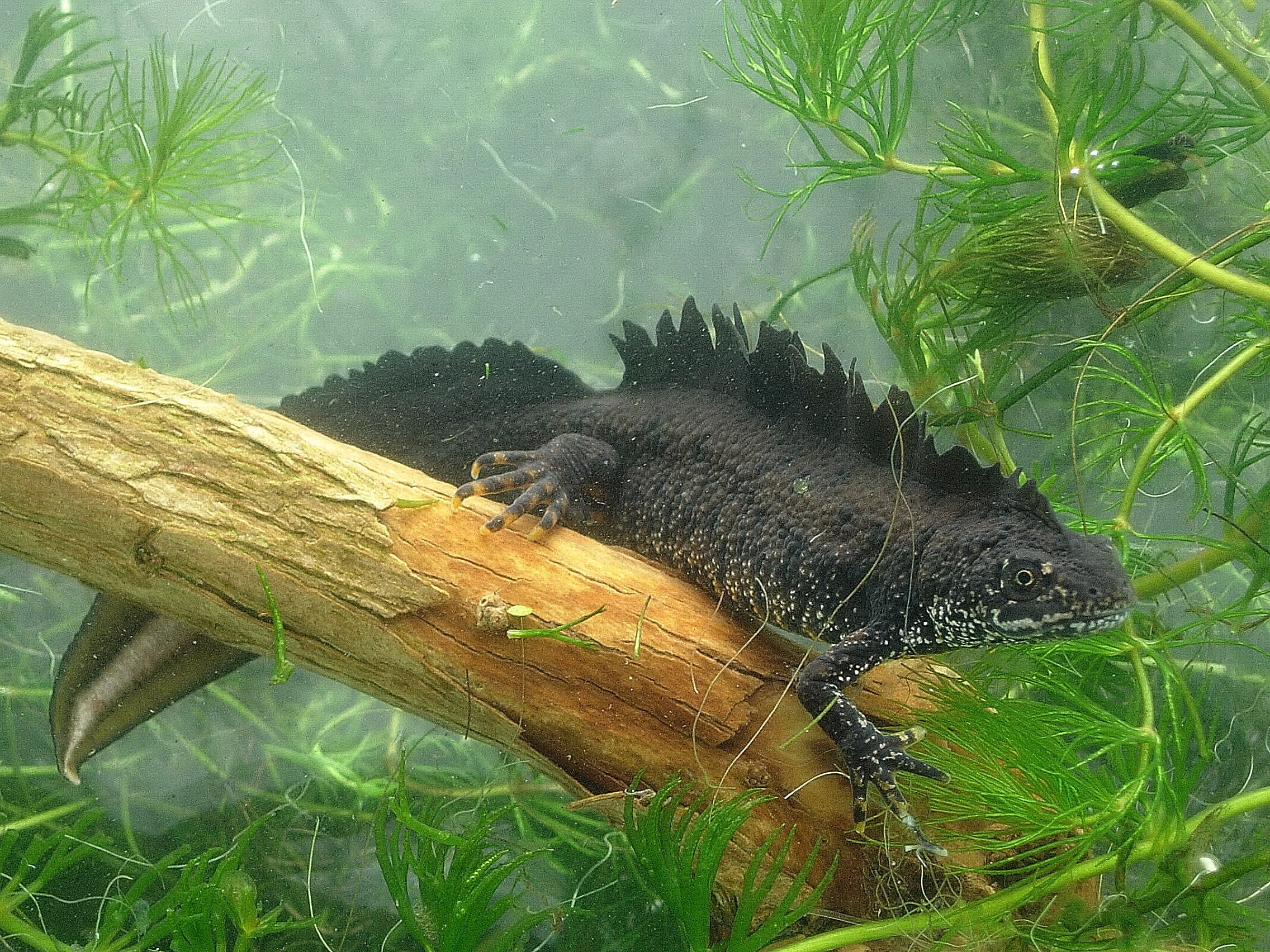Surveys are usually required to confirm the presence or absence of Great Crested Newts (GCN) where proposals have the potential to impact upon the species. Indicators that GCN may be present include the presence of ponds on or around the site (usually within at least 250m).
The traditional method for establishing the presence of GCN is to undertake a survey in spring time (mid-March to mid-June) consisting of at least 4 survey visits to the ponds. This type of survey usually involves deploying funnel traps (under licence) at night time and retrieval the following morning, combined with other survey methods. If GCN are found and a mitigation licence is likely to be required, then two further survey visits will allow a ‘population size-class assessment’ to be made to inform the licence application.
Alternatively, a single visit to the ponds can be made from mid-April to June 31st by a licensed GCN surveyor to take water samples for laboratory analysis to test for the presence of great crested newt DNA in the pond environment (environmental DNA survey). However, this type of survey will not give an indication of the population size, which may be needed for licensing purposes.
Alternatively, it may be appropriate to enter the site into a new form of licensed mitigation in England for GCN called District Level Licensing (DLL). DLL does not necessarily require GCN surveys or on-site mitigation as all compensation is provided away from the development site and is funded by developer buy-in. However, we would recommend eDNA surveys as a minimum to establish whether GCN are a constraint to your proposals, and to ascertain the level of impact upon the species.
CES are well-placed to review your proposals and offer guidance on the best approach to GCN survey and mitigation.


